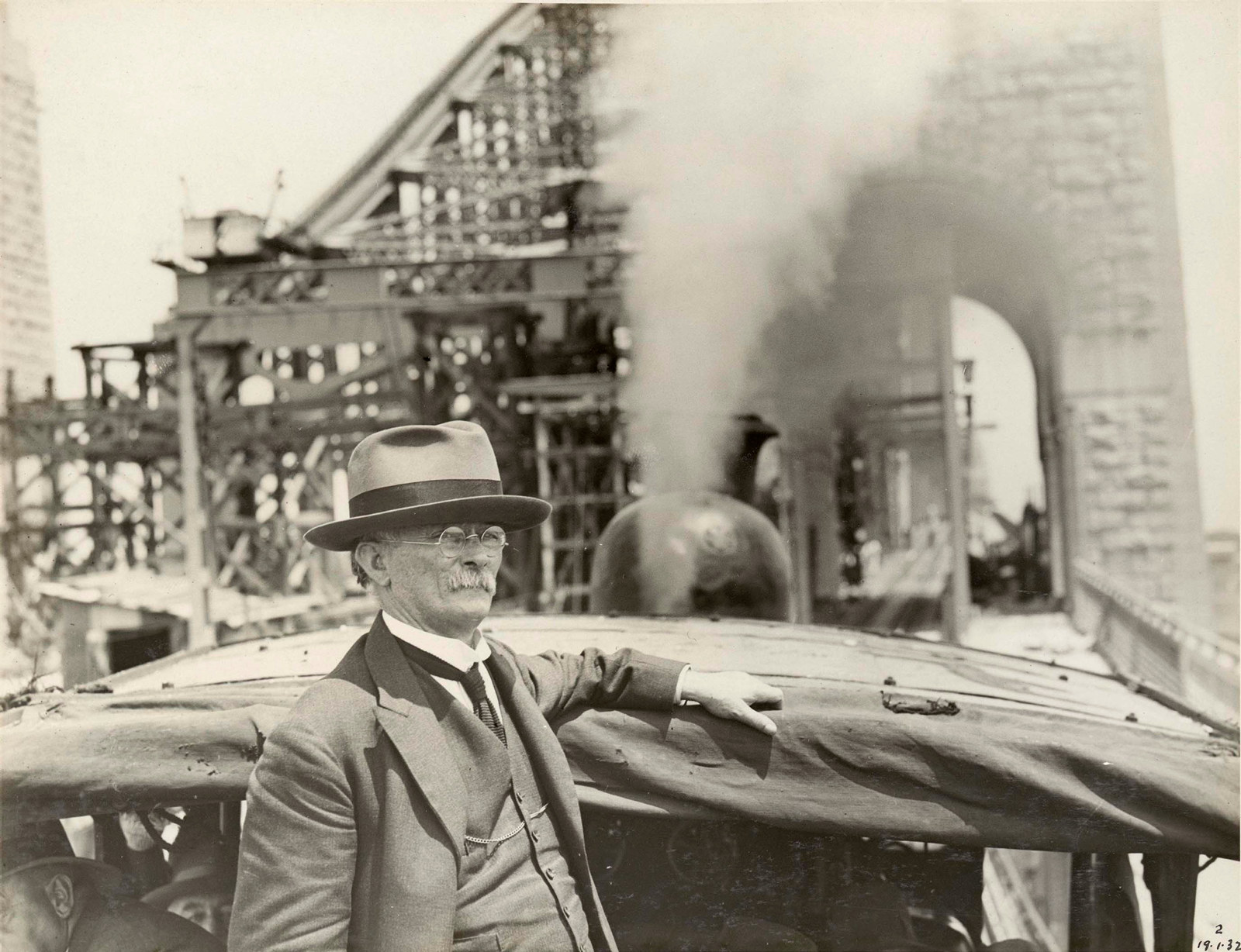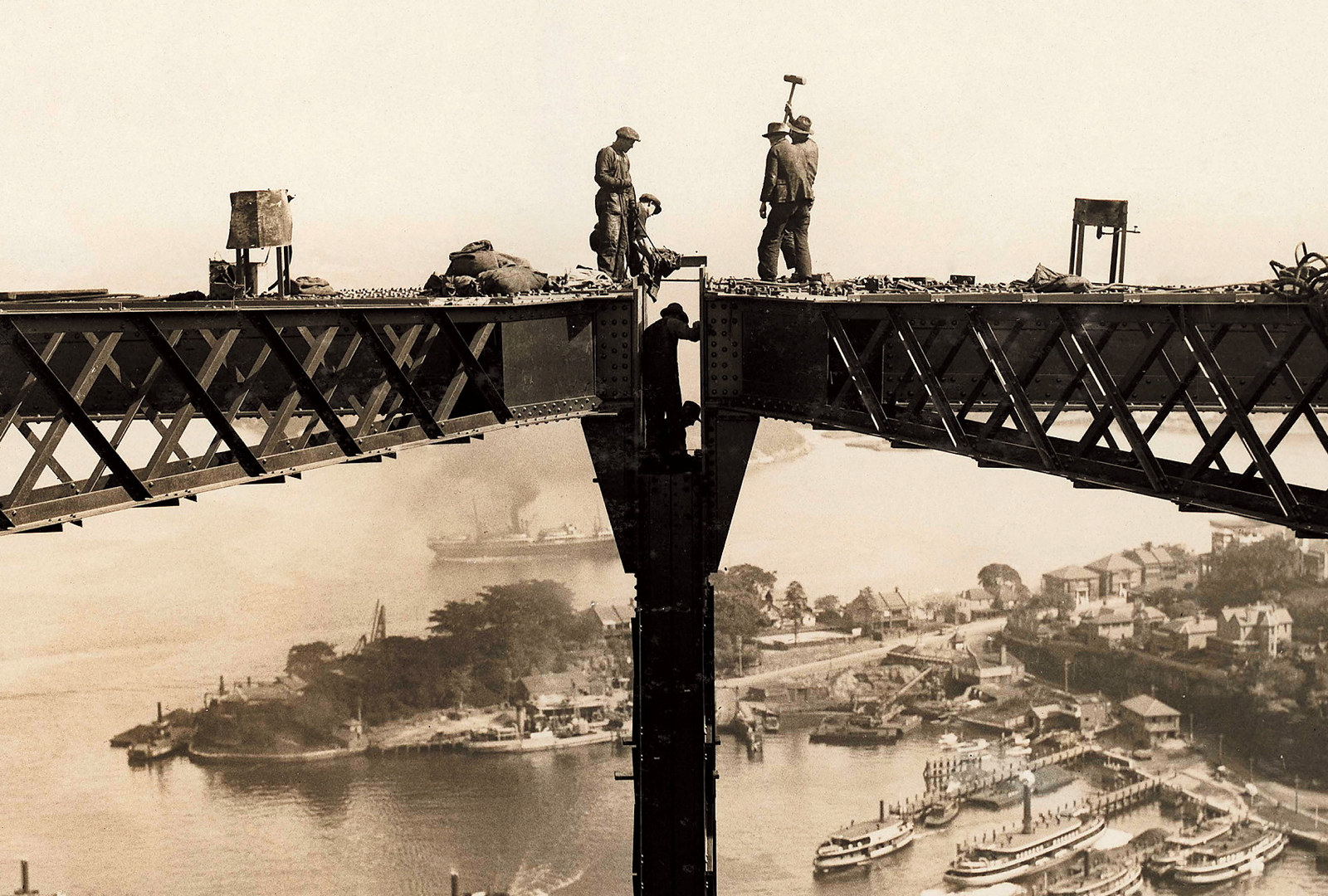John Bradfield
1867–1943
John Bradfield is known as the father of modern Sydney, largely because of the role he played in overseeing the design and construction of an Australian icon, the Sydney Harbour Bridge.
John Bradfield shone from a young age. As a boy he was hard-working and academically gifted, excelling at school in Ipswich, Queensland, in the late 19th century. He was awarded a scholarship to attend Ipswich Grammar School, where he was named dux and won the chemistry medal. Another scholarship enabled him to move to Sydney to study at the University of Sydney, where he earned a degree in engineering along with the university medal.
In his working life as an engineer, Bradfield excelled at planning and realising major public works schemes – projects that would benefit people’s lives by improving infrastructure like water storage and public transport.
Despite his success, Bradfield also faced disappointments. He applied for the role of chair of engineering at the new University of Queensland in 1910, thinking himself the perfect candidate. Despite providing 22 supporting testimonials, he was unsuccessful in his application, a huge personal disappointment for him.
Railways proved to be Bradfield’s great love. He believed that a well-designed and well-constructed electric railway system would be essential to an expanding modern metropolis like 1920s Sydney. Further, he believed that public transportation should be beautiful, efficient, and affordable for all people.
At the heart of John’s vision was an underground electric rail network for the city of Sydney – what Sydneysiders now know as the City Circle. His design was based on major international subway systems like those in New York and London. Electric trains running through the city could now link directly with the suburbs, previously largely served by slower trams and buses.
The crowning glory of John’s vision for Sydney was the construction of a bridge that would connect the two sides of the harbour, for both private vehicles and his electric train line. Like the final piece in a puzzle, the bridge opened in 1932. Construction had taken eight years; during the Depression, it employed thousands of men who would otherwise have struggled to find work.
The Sydney Harbour Bridge was an engineering masterpiece, the longest single-span steel arch bridge in the world when completed. It became a beacon of hope, a very visible and powerful symbol for the people of Sydney in difficult times, revolutionising the city and bringing it into the modern age. In honour of John’s work as overseer of the project, the highway that runs across the bridge was named the Bradfield Highway.
John’s lifelong commitment to his profession, and his progressive thinking, helped to shape the Sydney we know today, establishing our integrated public transport system. The next time you come down the wide, busy sweep of the Bradfield Highway and across the Harbour Bridge, spare a thought for the man whose vision of Sydney was as large as his lifelong thirst for knowledge.
Published on
Related

On This Day
19 Jan 1932 - first train across Sydney Harbour Bridge
On 19 January 1932 the first train crossed the Sydney Harbour Bridge

Bridging Sydney
The story of Sydney's Harbour Bridge unfolds like an epic tale. The proposals, planning materials, maps, photographs, artworks and contemporary written sources offer a wealth of information and fascinating insights into the history of Sydney

On This Day
13 May 1932 - Premier Jack Lang dismissed
On this day 13 May 1932 the NSW Premier, Jack Lang, was dismissed from office by NSW Governor Sir Philip Game

On This Day
Building the Sydney Harbour Bridge
On 28 July 1923 construction began on the Sydney Harbour Bridge
